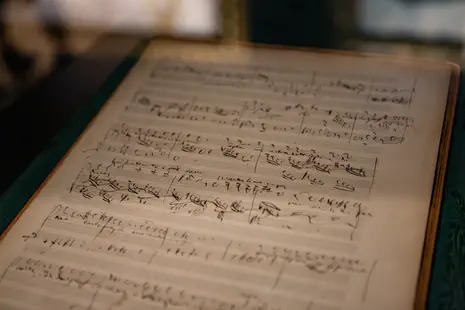Motivation
Growing up, I always found it hard to memorize key signatures of keys I wasn’t familiar with. This especially held true for minor keys since I did not play much minor pieces as a starting Classical pianist.
Nevertheless, music exams oftentimes would ask questions relating to minor key signatures, so I developed a method for me to understand it easily and quickly.
Introduction
Before I explain my method, I want to note that if you don’t need an extra mnemonic to memorize minor key signatures, then you do not need to continue reading this. Minor key signatures can be derived from Major equivalents by descending 3 half steps from the Major key.
For example, given C Major, we can find the relative minor equivalent by dropping 3 half-steps that leads to a minor.
Mnemonic
As a visual learner, I appreciate any type of visual cue I can use to remember certain patterns. It just so happens there is one for key signatures.
I remember my minor key signatures by using the following list: E, B, F, C, G, D, A.
This order corresponds to the number of sharps and flats according to the name of the minor key. It also just so happens that going from left to right represents the order of sharps, and going from right to left represents the order of flats.
To put more simply, if we start at E, we have the order of sharps from E to D. In other words, e minor has 1 sharp (F). b minor has 2 sharps (F and C), f sharp minor has 3 sharps (F, C, and G), etc.
If we travel the other direction, we get the order of flats. For example, d minor has 1 flat (B). g minor has 2 flats (B, and E), etc.
And… that’s pretty much it!
As long as you can memorize the order: E, B, F, C, G, D, A, you can find the key signature of any minor key relatively quickly.
All keys that are not official are assigned full accidentals on top of its original accidentals. In the previous note, I mentioned that a flat minor does not officially exist. It does, however, theoretically exist. Since it is not an official key, we assign all flats to the key since we are working with flats. Therefore, a flat minor has 7 flats.
Likewise, a sharp minor has 7 sharps because we are working with sharps, and a sharp minor does not officially exist.
As another example, let’s take a look at g flat minor. We know for sure that g flat minor doesn’t exist, but we know that g minor has 2 flats: B and E. Since we’re working with a theoretical key, we flat the entire key signature again.
Now, we have: G flat, A flat, B double flat, C flat, D flat, E double flat, F flat, and G flat.
Further Note
This method can be applied to Major key signatures. Since minor keys are relative to major keys by 3, we can shift our original list by 3 to use a Major equivalent.
You will be working with: G, D, A, E, B, F, C.
Like with the minor representation, G to F represents the order of sharps, and F to G represents the order of flats.
For example, G Major has 1 sharp, and F Major has 1 flat. G flat major has 6 flats while F sharp major has 6 sharps.
In this case, C is our special character since only C Major has an official key signature. C flat major has 7 flats while C sharp major has 7 sharps.
